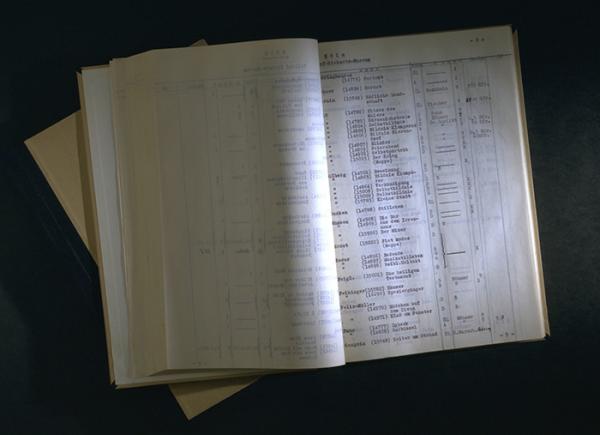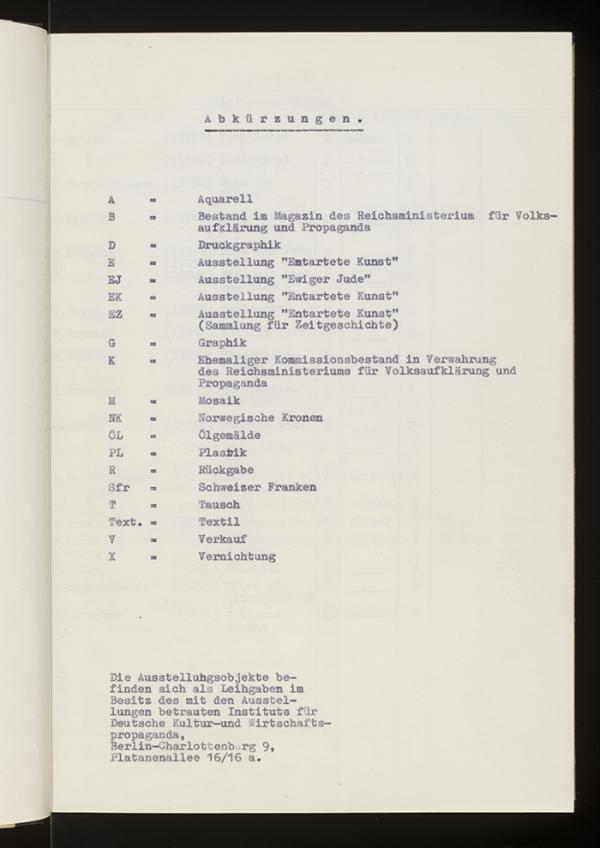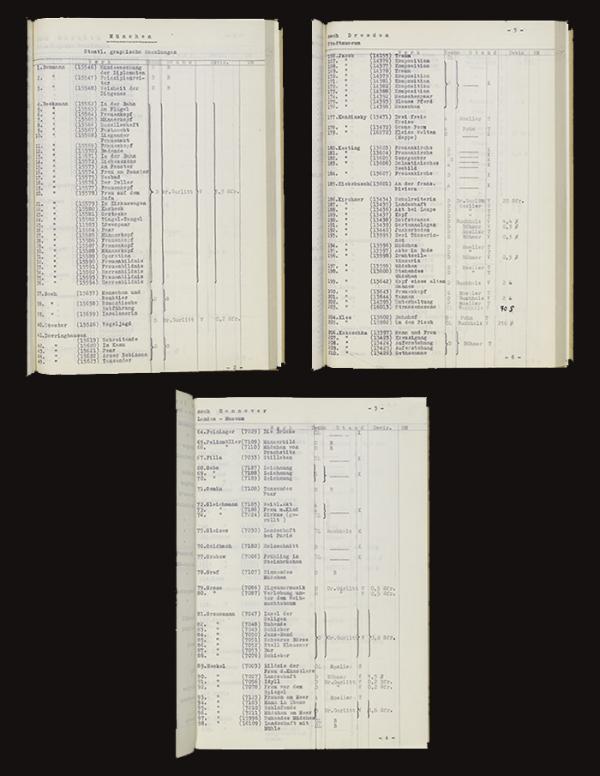
Phaidon and the V&A's Degenerate Art inventory
As the V&A uploads its Nazi-seized art list we examine how the documents and our founders took similar paths
In 1937, following the Nazi annexation of Austria, Dr Bela Horovitz and Ludwig Goldscheider, the founders of Phaidon press, left Vienna for London. Their company, which they had established 14 years earlier, went on to flourish in the British capital, publishing the kind of work deemed unacceptable in Nazi occupied Europe.
In January 1937 the Nazis began to take a more active interest in which publishing companies employed Jewish people. In July 1937, the Degenerate Art exhibition opened in Munich. This state-sponsored show displayed modern art that supposedly undermined the idealised, Third Reich way of life, and was part of a much larger cultural movement undertaken by the Nazis to root out all creative endeavours, from Cubism to jazz, deemed unhealthy by the regime. A huge number of works were seized from public institutions in Germany during 1937 and 1938, as Hitler’s government sought to 'cleanse the nation' in the name of National Socialism.

Today, a record of that seizure will go online for the first time, when London’s Victoria & Albert Museum uploads the contents of a two-volume, 479-page leger list of confiscated works, compiled in the early 1940s by the Third Reich. This, the V&A says is "the only known copy of a complete inventory of 'Entartete Kunst' confiscated by the Nazi regime."
This document was donated to the V&A by fellow Viennese émigré, Heinrich Robert (Harry) Fischer. Fischer, like the Phaidon founders, had worked in the Austrian art world, as an art dealer. He too had fled to London after the Nazi invasion, just a year later than Horovitz and Goldscheider, in 1938. Following his service in the British army, Fischer went on to launch two London art galleries: Malborough Fine Art in 1946, and Fischer Fine Art in the 1970s.
It is unclear how he came by this two-volume set, as it was published by the Reichsministerium für Volksaufklärung und Propaganda, or Reich Ministry for Public Enlightenment and Propaganda, in either 1941 or 42. Fischer's widow donated it to the V&A in 1996.
The V&A says the typescript inventory “comprises 479 pages, split into two volumes (A-G and G-Z). Institutions are listed alphabetically by location. For each institution, confiscated works are recorded alphabetically by artist and include information on the fate of each piece. Often the name of the work’s buyer and a price are given, others entries are marked 'X' indicating that the works in question were destroyed.”

Those unwilling to wait for the upload can go to the Free University of Berlin’s site, which offers a similar searchable database of Degenerate Art. All the obvious Nazi foes, such as Josef Albers, Marc Chagall and Paul Klee are listed, as are prominent modern artists including: Picasso, Kandinsky and Matisse. More surprisingly, Cezanne’s work was seized, as was an early Henry Moore.
Obviously the destruction of artworks, no matter how significant, is among the least significant of Nazi crimes. Nevertheless, we have to thank the likes of Fischer, Goldscheider and Horovitz for both keeping European modernism alive, and for recording the dangers it once faced.
For more on this, visit the V&A site. For greater insight into how the Viennese art world took root and flourished in London, order a copy of our new title Émigrés, a fascinating look at the impact on the illustrated publishing industry of émigrés from Germany and Austria in the first half of the 20th century, looking in particular at the art publishing houses of Phaidon Press and Thames & Hudson.